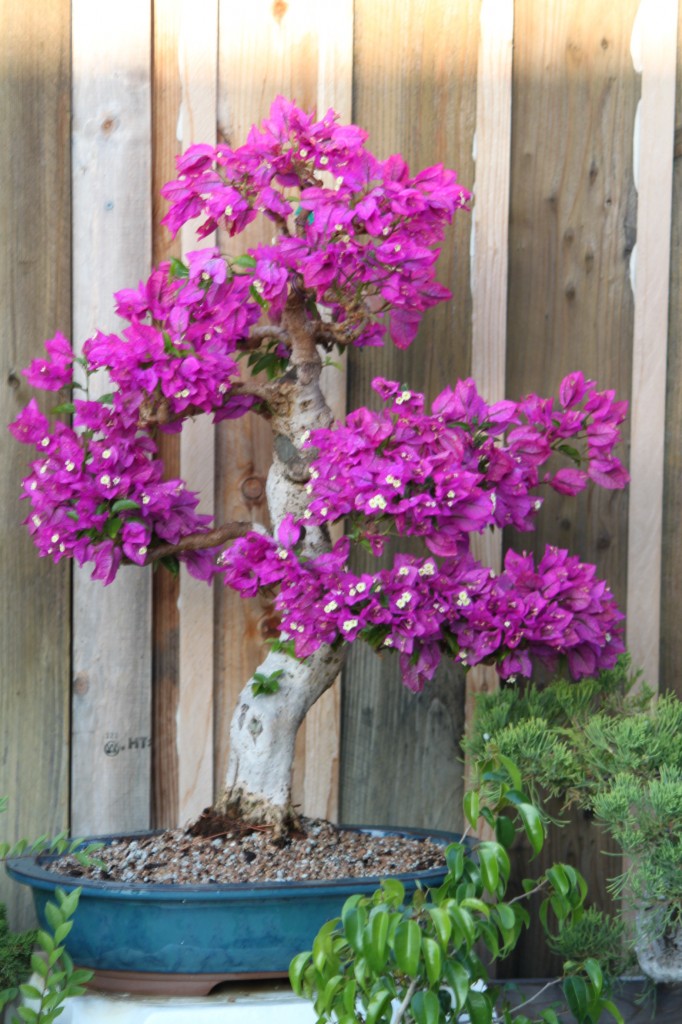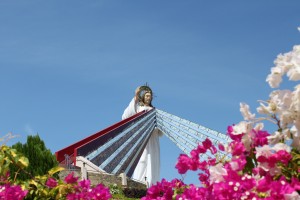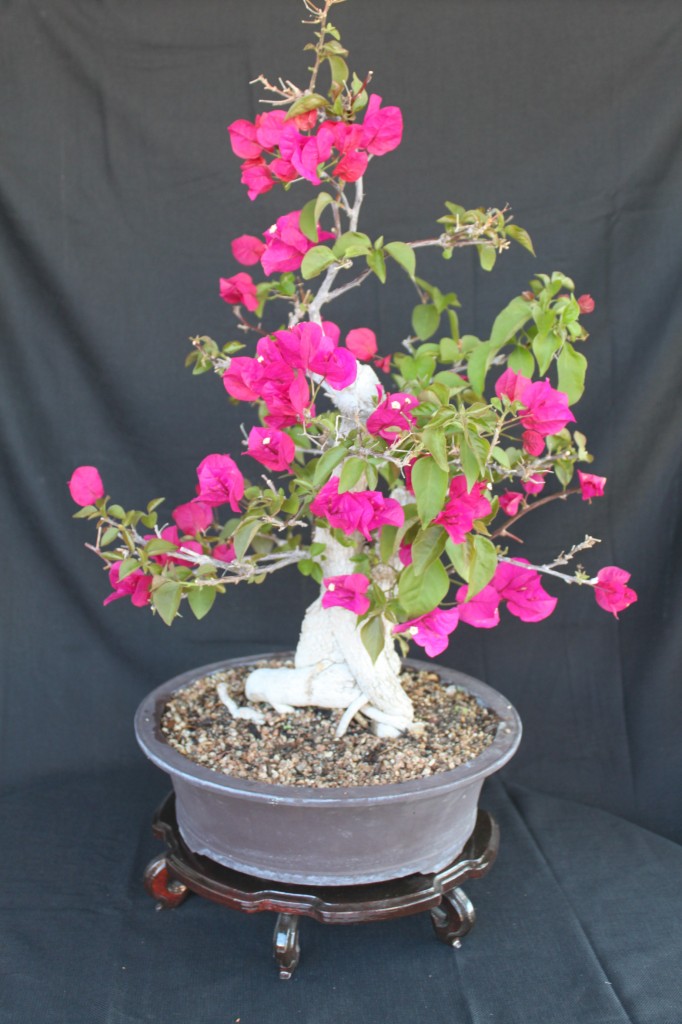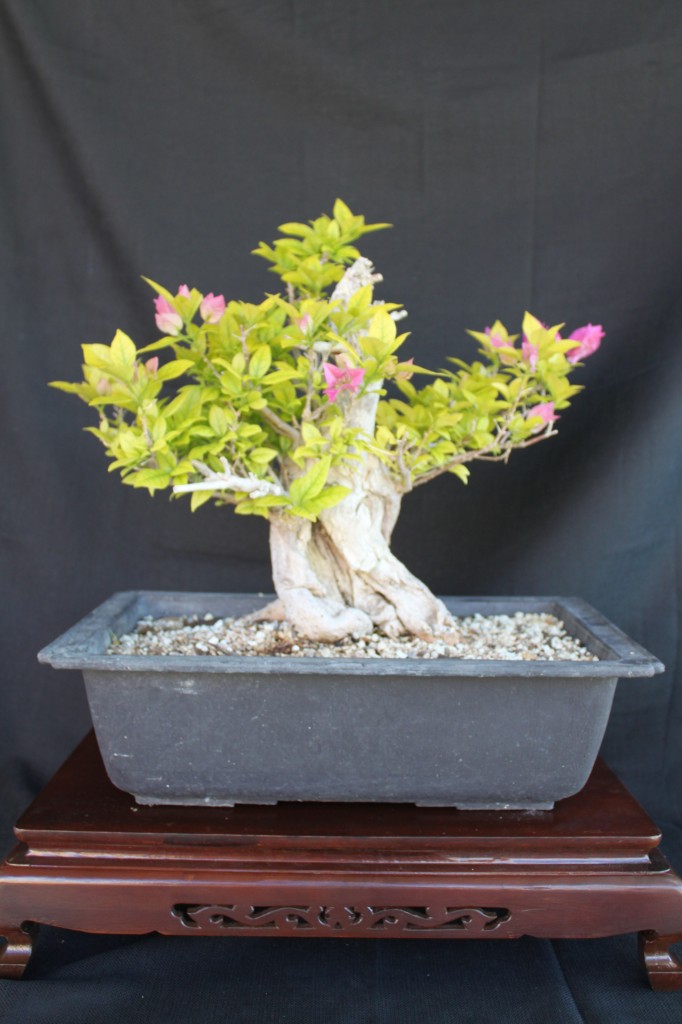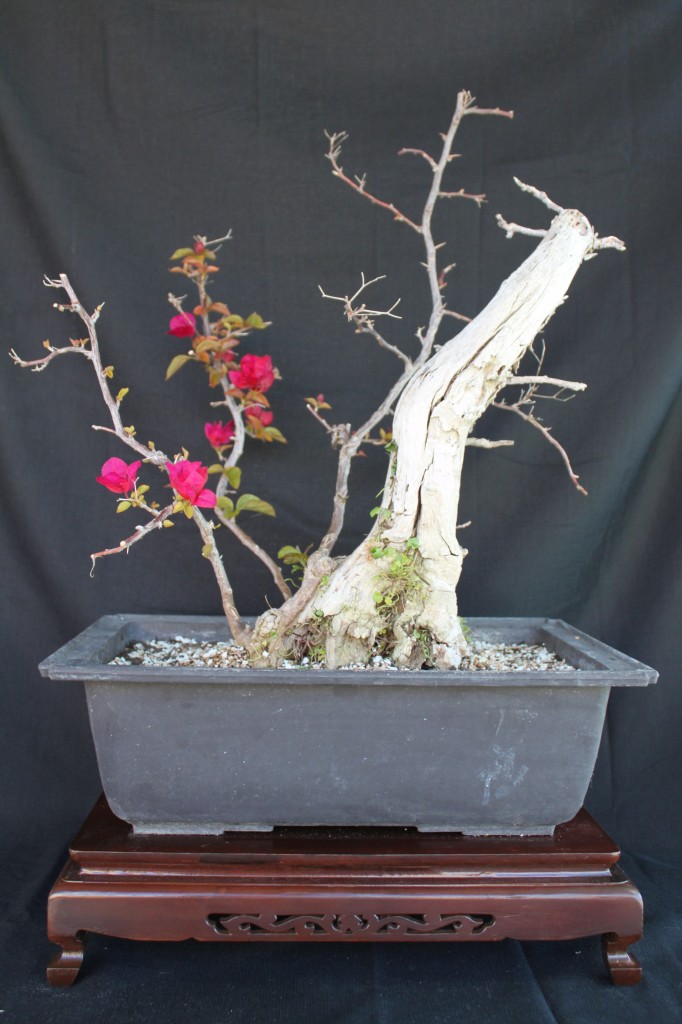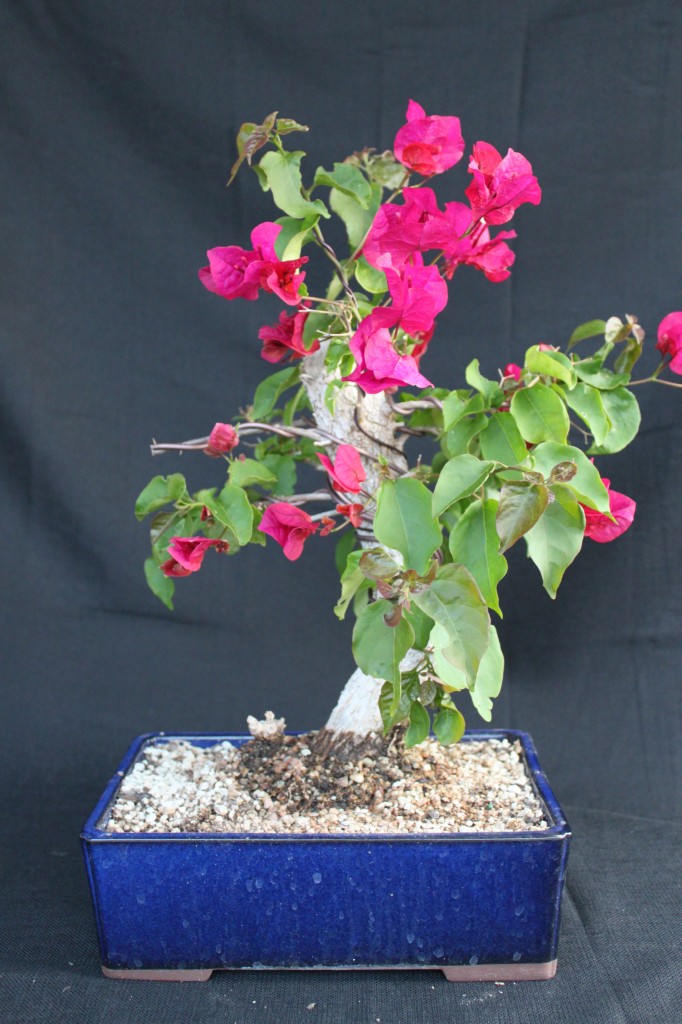Bougainvillea Bonsai
Bougainvillea Bonsai
Few plant varieties can match the magnificence of a Bougainvillea bonsai in bloom. Bougainvillea bonsai combine an amazing floral display with a thick trunk and an interesting branch structure, for an impression matched by little else.
Background:
Bougainvillea is a genus of flowering plants native to Brazil, Peru and Colombia. Experts have classified anywhere from four to eighteen species, but most plant taxonomists recognize only four: Bougainvillea Glabra, Bougainvillea Spectabilis, Bougainvillea Peruviana, and Bougainvillea Spinosa. Of the four, the commonest and the one most used for bonsai is Bougainvillea Glabra, commonly known as paper flower.
Bougainvillea Glabra is a woody vine which in the wild climbs over trees and rocks. The colorful petal like structures which appear to be flowers are actually not. They are bracts, or colored leaves. The actual flowers are tiny, pale yellow structures in the center of the bracts. In warmer areas Bougainvillea is a tropical evergreen, but in areas with colder winters Bougainvillea becomes semideciduous or fully deciduous. Bougainvillea is not frost tolerant, and will die back, or die outright if temperatures approach or go below freezing. Its most striking feature are the colorful bracts, which surround the tiny yellow flowers.
Bougainvillea was first discovered by Europeans in 1768, by Philibert Commercon, a botanist accompanying French Admiral Louis Antoine de Bougainville on his voyage around the world. Commercon of course named his discovery after his employer. By the early Nineteenth Century, Bougainvillea had been introduced to nurseriesin Europe, and was being cultivated in greenhouses in England, and outdoors farther south. British nurseries did a thriving trade exporting Bougainvillea to British colonies all over the world.
Bougainvillea has been extensively hybridized, and can now be found in wide range of colors, from deep purples, to every shade of pink, to a deep red, to oranges, yellows and even white. Bougainvilleas are popular ornamental plants in most areas with warm climates, including Ethiopia, Indonesia, Aruba, the Philippines, Thailand, Pakistan, India, Sri Lanka, Taiwan, Vietnam, Malaysia, Australia, Greece, Spain, Turkey, Cyprus, Singapore, the Mediterranean, the Caribbean, Central America, Mexico, the Persian Gulf Nations, and the southern and southwestern United States.
In most of earths warmer regions, Bougainvillea has become a transplanted native, and has gone wild. In southern California, Bougainvillea can be found growing wild along some freeways.
Where to Get One:
The best way to get a Bougainvillea for bonsai is to collect one –either from the wild where permitted (Bougainvilleas are non native everywhere outside of South America) or from a landscape. Fortunately Bougainvilleas with large trunks are easily collected. They typically have a shallow root system consisting mostly of thick lateral roots emanating from a massive central bole, that may be as large as twice the diameter of the trunk above the soil.
If you cannot find one to collect, or if you want a flower in something other than pink, purple or red, then head to your local nursery. (That is, if you live in the tropics, or in a temperate area with mild winters. If not, then head online, and order one.)
If you want to grow your own (or if you have a large one on your property that needs pruning), Bougainvillea propagates easily from thick cuttings – the thicker the better. Just remember to take them in warm weather, when daytime temperatures are at least eighty degrees. Bougainvillea grow best when the weather is warm, and not at all when the weather is cold. You can strip the bark to the cambium on the part that is to be below the soil and dust this area with rooting hormone, but this is not necessary.
What to do With it After You Get it:
If you have purchased a nursery specimen with a thin trunk, then fatten it up in the ground. When grown in the ground in places with mild climates, Bougainvillea grows very fast, and only needs a few years to build a very thick trunk. While it is possible to grow Bougainvillea in tubs also, you will not get the same results as putting one in the ground. Thickening a Bougainvillea trunk depends on its ability to send lateral roots for long distances, and it cannot do this in a tub. Wherever you cultivate your Bougainvillea, give it lots of organic fertilizer high in nitrogen. Bougainvilleas burn through a lot of nitrogen to produce their leaves, and they produce a lot of leafy growth when they are growing fast.
When you decide to lift your thickened Bougainvillea bonsai from the ground, do it in late spring, after the weather is warm and the tree is in active growth. Bougainvilleas only recover from root pruning when they are in active growth.
Potting and Soil:
As indicated above, potting and repotting should take place in warm weather, while a Bougainvillea is in active growth. Root pruning is a tricky matter. On young and small specimens, the fine roots can be very, very brittle, and will break off at even the slightest disturbance of the soil. However, once the Bougainvillea has a large number of roots that are as thick as a pencil or thicker, then a Bougainvillea can be easily and safely root pruned, without fear of danger to the plant.
Bougainvilleas like a fair proportion of organic matter in the soil – about 40% is optimum. The inorganic part of the soil can be decomposed granite, agricultural pumice, turface or diatomite, or coarse sand, or varying proportions of any or all of the above.
Bonsai pots for Bougainvillea should be a little on the large side. They tend to consume lots of water and nutrients when they are in bloom and/or pushing leaves, and if they start to starve for either one, they will show it, and the tree will look less than healthy. In terms of color, you can use an unglazed pot, or you can choose a blue, green or cream glaze that harmonized with the colorful bracts.
Siting:
Bougainvilleas like full sun. This is a consideration whether you keep your Bougainvillea indoors or outdoors. If it is to be kept indoors it needs to be in a south facing greenhouse window or conservatory. If you cannot give it this much natural sun, you will have to augment the available light with grow lights.
If you are keeping a Bougainvillea outdoors, it must be kept in full sun. If you keep a Bougainvillea in the shade, it will still grow, but it will not flower.
Bougainvilleas are not frost tolerant at all. Sub freezing weather will kill them. They must have complete protection from frost. Where the author lives in Zone 9b, this means haling them in close to the walls of a heated structure. In more severe climates, it means moving them entirely indoors for the winter.
Pests and Diseases:
Bougainvillea are vulnerable to black spot fungus, and somewhat vulnerable to aphids. Other than that, they are relatively pest free.
Pruning and Shaping:
Bougainvillea sends out long, viney shoots, which can be pruned back to one or two pairs of leaves. New growth and last year’s growth can be trained by wire. However, older and thicker branches cannot be bent, as the wood is very brittle. Do not prune Bougainvillea while it is dormant. Bougainvillea should only be pruned while it is in active growth.
Styling:
Bougainvillea is suitable for just about every style of bonsai except formal upright. Thick trunked informal trees work best, as trunk forms in collected trees tend to be somewhat free form and unpredictable. Cascade is possible, and natural to the species, but rarely seen.
Closing Remarks:
Of all the tropical species used for bonsai, Bougainvillea puts on the most impressive floral display, and is rivaled only by the Azalea among temperate bonsai. A Bougainvillea bonsai will give you an amazing display for your garden.

